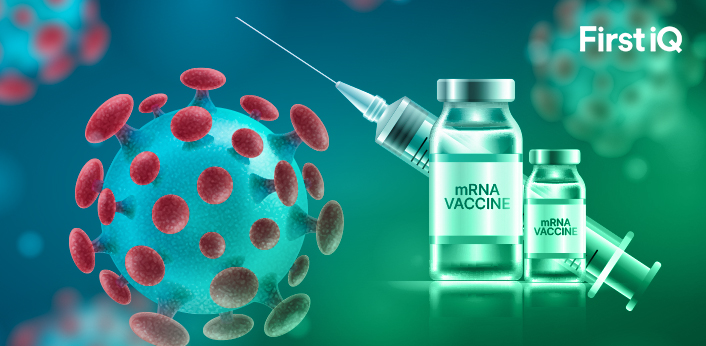mRNA vaccines 2.0: Redesigning Immunity for the Post-Pandemic Era

In the fight against infectious diseases, science has discovered a powerful tool called messenger RNA (mRNA). Even after being considered too unstable to use outside the lab, mRNA has now taken center stage in a new revolutionary wave of vaccine technology that reshapes the parameters for our respond to the global health threats.
The Turning Point: Covid-19 pandemic
mRNA vaccines rose to prominence during the Covid-19 pandemic, a time that not only disrupted lives but also fast-tracked innovation in vaccine technology. What was once considered experimental quickly became essential, marking a major turning point in the evolution of vaccines.
Before the pandemic, vaccine development largely relied on conventional methods such as:
- Subunit Vaccine Technology
- Live Attenuated Vaccine Technology
- Inactivated Vaccine Technology.
However, pandemic fueled a dramatic shift in scientific as well as industrial sector towards the mRNA platforms, which highlighted their potential for rapid development, adaptability and high efficacy.
Post-pandemic vision: mRNA Vaccines 2.0
As the world now enters the post-pandemic phase, the vision is to develop mRNA vaccines 2.0, which are going to be the new solution, not only for emergency use but also for broad, durable, and scalable immunization strategies across various diseases.
Several approved mRNA vaccines have formed a way for further advancements, such as:
- Moderna's mRNA-1345 for RSV infection
- Moderna mRNA-1010 for seasonal influenza
- Moderna (Spikevax/ mRNA-1273) for SARS-CoV-2
- Pfizer-BioNTech (Comirnaty / BNT162b2) for Covid-19
Leading pharmaceutical companies are making significant investments in R&D and expanding their mRNA vaccine portfolios to target a broad spectrum of infectious diseases. Key players like Moderna, Inc. and Pfizer currently have several vaccine candidates in various stages of development, including those aimed at combating serious illnesses such as influenza. The below table reflects the ongoing developments being made across the mRNA vaccine platform by two major giants:
Table: mRNA vaccines pipelines
|
Major players |
Indication |
Vaccine Candidate |
Development Status |
|
Moderna, Inc. |
Flu vaccine |
mRNA-1010 |
Phase III |
|
mRNA-1020 |
Phase II |
||
|
mRNA-1030 |
Phase II |
||
|
mRNA-1011 |
Phase II |
||
|
mRNA-1012 |
Phase II |
||
|
Older adults RSV vaccine |
mRNA-1345 |
Phase III |
|
|
Endemic HCoV vaccine |
mRNA-1287 |
Preclinical Development |
|
|
RSV + hMPV vaccine |
mRNA-1365 |
Phase I |
|
|
Pediatric RSV vaccine |
mRNA-1345 |
Phase II |
|
|
CMV vaccine |
mRNA-1647 |
Phase III |
|
|
EBV vaccine |
mRNA-1189 |
Phase I |
|
|
mRNA-1195 |
Phase I |
||
|
HSV vaccine |
mRNA-1608 |
Phase II |
|
|
VZV vaccine |
mRNA-1468 |
Phase II |
|
|
HIV vaccines |
mRNA-1644 |
Phase I |
|
|
mRNA-1574 |
Phase I |
||
|
Norovirus vaccine |
mRNA-1403 |
Phase I |
|
|
mRNA-1405 |
Phase II |
||
|
Lyme vaccine |
mRNA-1975 |
Phase II |
|
|
mRNA-1982 |
Phase II |
||
|
Zika vaccine |
mRNA-1893 |
Phase II |
|
|
Nipah vaccine |
mRNA-1215 |
Phase I |
|
|
Mpox vaccine |
mRNA-1769 |
Phase I |
|
|
Pfizer |
Pandemic Influenza |
PF-07985819 |
Phase I |
|
Influenza (adults) |
PF-07252220 |
Phase 3 |
|
|
Varicella |
PF-07911145 |
Phase I |
Source: Company Vaccine Portfolio, Pfizer pipeline, Annual Report, ClinicalTrials.gov, and Straits Analysis
Recent Breakthroughs in mRNA Innovation:
- In May 2025, Moderna initiated trials for a combined mRNA-based COVID-19 and influenza vaccine. The goal is to assess whether this single shot can produce higher antibody levels compared to existing standalone vaccines against multiple flu strains and the XBB.1.5 COVID-19 variant.
- In January 2025, Afrigen Biologics, aims to develop its first mRNA-based vaccine against the Rift Valley fever, which is a mosquito borne disease that affects countries across Africa and the Middle East.
- In July 2024, The Argentinian manufacturer Sinergium Biotech leads the mRNA Technology Transfer Programme initiative, that was jointly developed by World Health Organization and Medicines Patent Pool with an aim of building capacity in low- and middle-income countries for the development as well as production of mRNA-based vaccines.
Strategies to lead the future of mRNA vaccines in the global market:
The ongoing investments and innovation in the mRNA technology, does reflect a broader trend in the global vaccine market, wherein the rapid development timelines, and high efficacy, makes the mRNA vaccines, a preferred solution for both current as well as future public health challenges.
Companies can take several strategic as well as operational initiatives, to keep up with the evolving landscape of mRNA vaccines. The various strategic approaches are as follows:
- Continued advancement in R&D and technology platform innovation is likely to remain key in enhancing the effectiveness and stability of mRNA vaccines.
- Collaborations with biotech firms, academic institutions, and public health bodies are emerging as important drivers for accelerating mRNA vaccine development and accessibility.
- Expanding manufacturing capacity through scalable and flexible infrastructure could support rapid global deployment.
- Alignment with evolving regulatory and quality standards may help streamline approvals and build global trust.
- The growing interest in applying mRNA technology beyond infectious diseases points toward new possibilities in oncology, rare diseases, and personalized medicine.
By adoption of various strategic approaches, organizations can play a very important role in shaping the future of healthcare on a global scale during the revolutionary period of mRNA vaccines.
Therefore, the mRNA vaccines 2.0 development holds promise not only for emergency response but also for the routine global immunization programs, that are setting new standards for public health protection.





